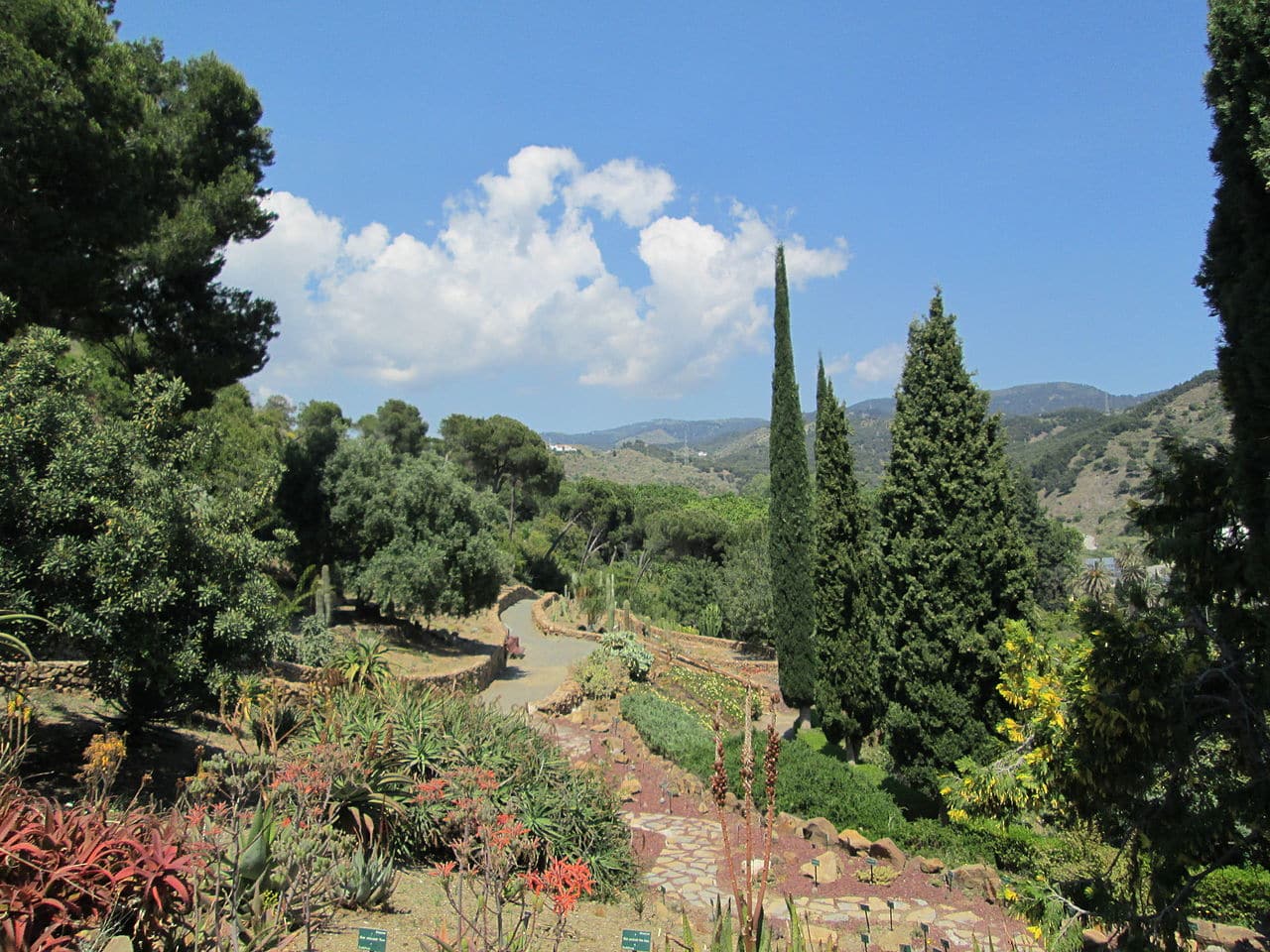
El Malaga botanical garden It is part of the attractive tourist offer of the Andalusian city. Also included in it are not only its wonderful beaches and good weather, but also several monuments and, above all, spectacular museums such as the carmen thyssen or Russian Saint Petersburg.
El Historical Botanical Garden La Concepción, which is its full name, occupies an area of twenty-three hectares in the northern part of the town. It has more than XNUMX plants that belong to some XNUMX species, both tropical and subtropical, as well as native. In fact, it is one of the few that exist in Europe with subtropical vegetation. It responds to the English landscape style and has more than one hundred and sixty years of history, although it has been publicly owned for about thirty years. If you want to know more about the botanical garden of Málaga, we encourage you to continue reading.
A little history of the botanical garden of Malaga
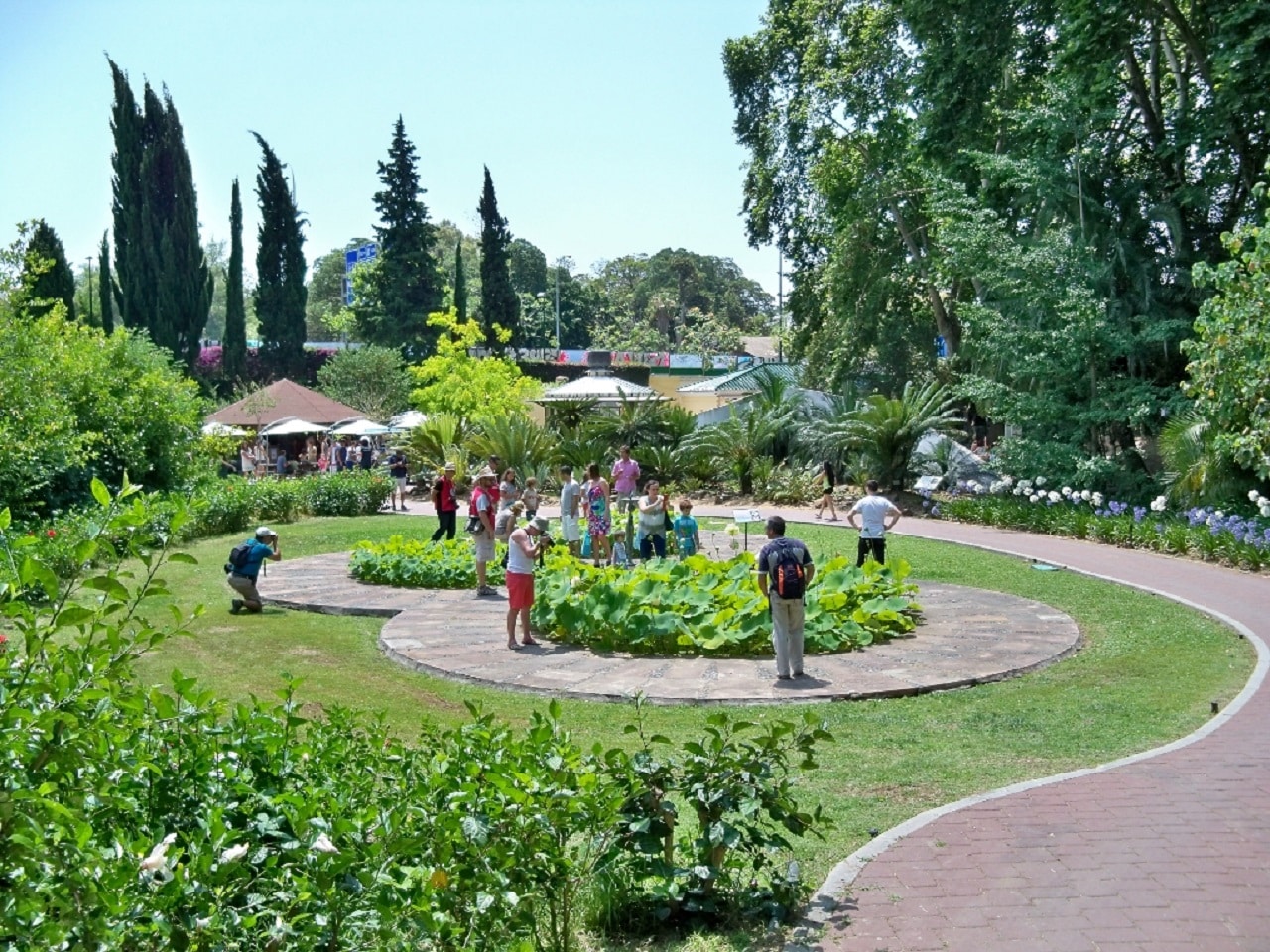
View of the botanical garden of Malaga
This natural wonder is due to the family of the industrial George Loring y Amalia Heredia, who decided to create it after visiting those that were in the palaces and gardens of Europe. To do this, they hired the French landscaper Hyacinth Chamoussent. He was in charge of converting the land of his fruit farm around the Guadalmedina river into what is now the garden.
Quickly, the fame of the place spread outside of Spain. And not only because of its exuberant landscape, but also because of the Loringian museum. This was made up of a collection of archaeological remains scattered around the facility and coming from the Roman villa of Cártama. Among its most outstanding elements, a mosaic and the so-called Lex Flavia Malacitana, a bronze with the laws that governed the area at the beginning of our era.
Likewise, to contribute to the atmosphere of the installation, the Lorings had a pavilion that you can still see today in the garden. However, the rest of the pieces are between the National Archaeological Museum and in the Provincial Customs, in Malaga itself.
Already at the beginning of the XNUMXth century, the farm was acquired by the Echevarrieta family, which expanded it by providing it with new spaces such as the nymph creek or the Palm Avenue, which we will talk to you about. Similarly, he ordered the construction of a gazebo that offers you spectacular views of the city of Malaga. They also adorned the facility with many contemporary sculptures.
In 1943, it was declared a historic artistic garden and a site of cultural interest. But it would not be until the end of the XNUMXth century when it passed into municipal hands and became one of the main attractions of the Costa del Sol. Once we have told you its story, we want to talk to you about what you can see in the botanical garden of Malaga. And, for this, we must distinguish between the historical garden and the modern one.
the historic garden
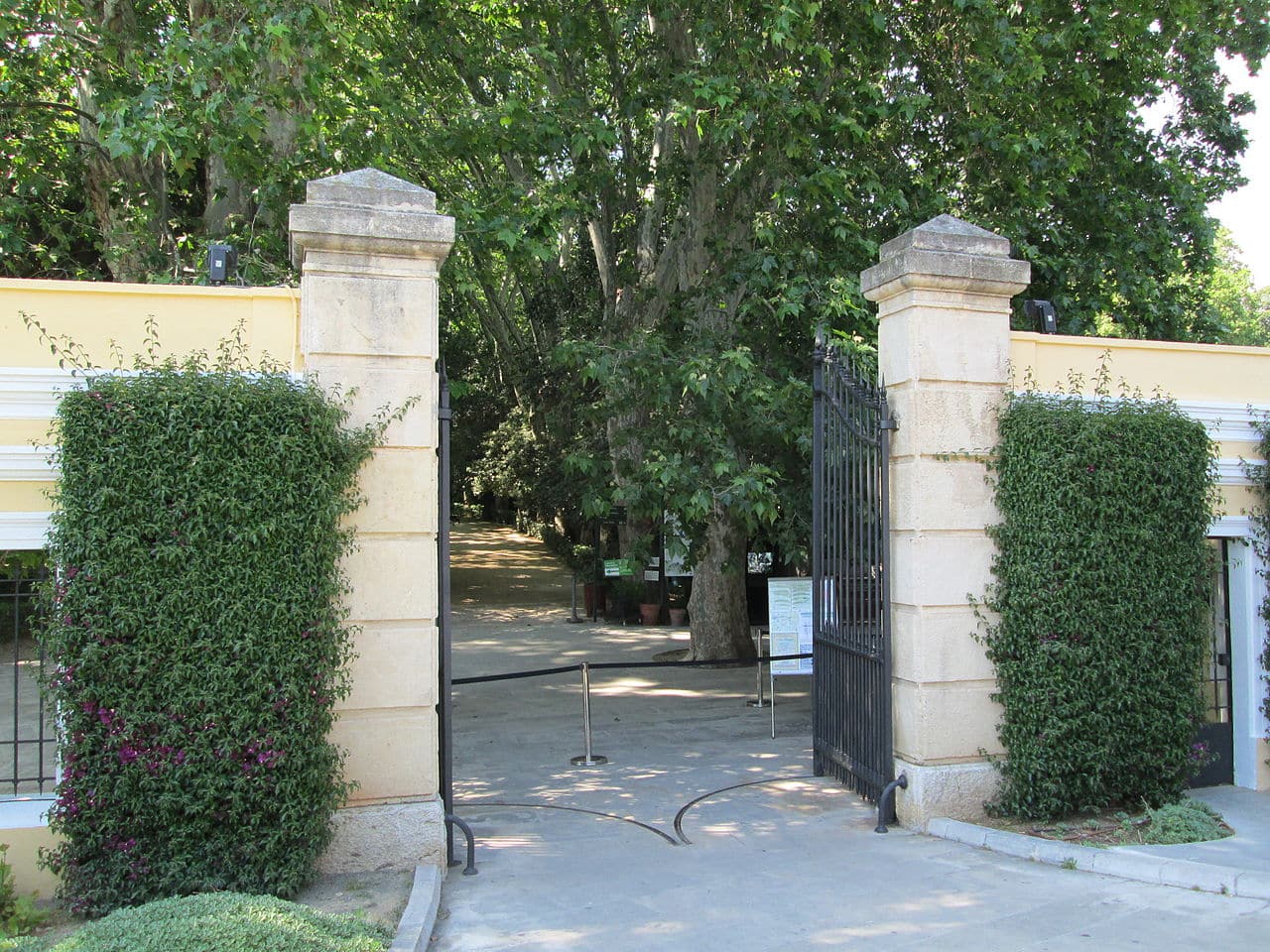
Entrance to the Botanical Garden of La Concepción
Its almost four hectares correspond to the part declared artistic garden in 1943. Regarding its vegetation, we advise you to see its spectacular subtropical flora collection and its palms. But also its decoration of waterfalls, stairways, fountains and greenhouses. And, above all, the places that we are going to show you.
The Wisteria Arbor
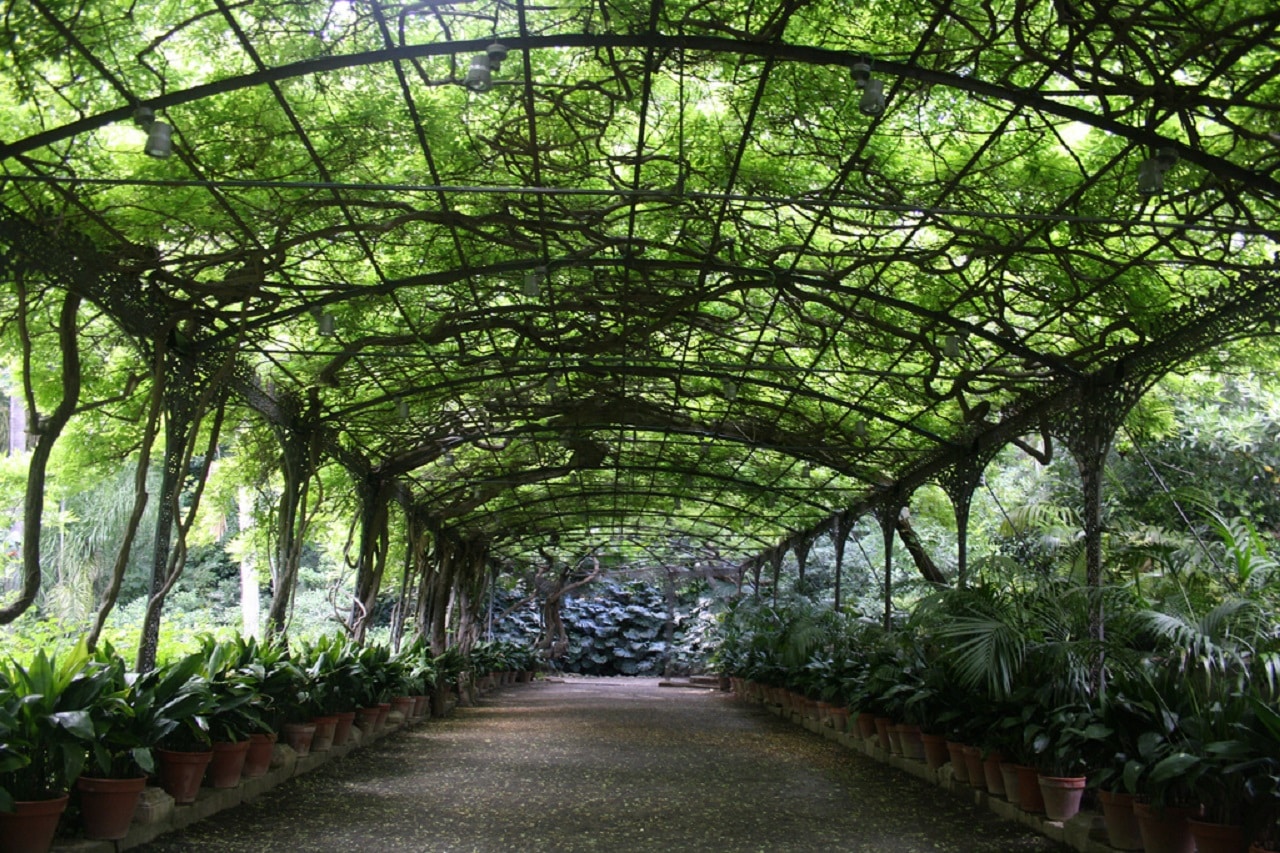
The Wisteria Arbor
La glycine It is one of the most beautiful plants you can see in the garden, with its green leaves and purple flowers. It was planted in it around 1857 and surrounds a beautiful iron gazebo and even extends to the nearby palm trees.
We advise you to visit when the wisteria is in bloom, towards the end of March or beginning of April, as it gives you a wonderful show of color and exuberance. It is precisely at this time when the gazebo is used to celebrate different events.
The pond of the Nymph
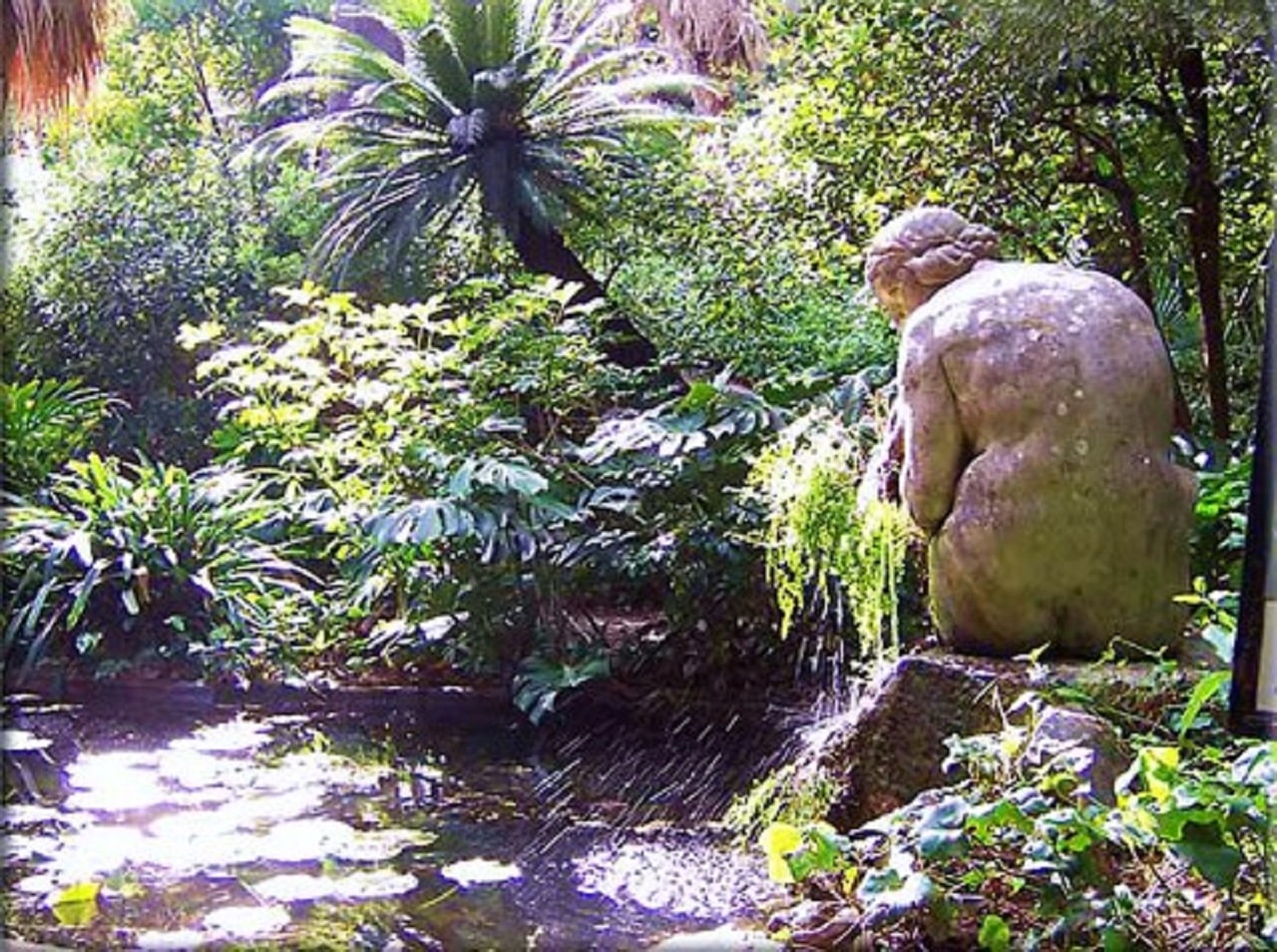
Nymph Pond
Among the sculptures with which the Echevarrietas adorned the garden is that of a nymph in the middle of a pond. It was the work of modernist Paco Durrio, who was inspired by classical Greco-Roman statues.
In turn, the figure introduces you to an area of the installation of French style, with well-kept hedges and plants in the center. This part was created to complement the rest of the garden, which responds to English tastes. Finally, behind the statue of the nymph you can see a spectacular mexican blue palm tree, which is one of the specimens with the highest botanical value in the enclosure.
It is centuries old, as are some ficuses, araucarias, pines, magnolias and casuarinas. But you can also see magnificent cypresses, cedars, cycads and even giant birds of paradise.
The Loringian Museum
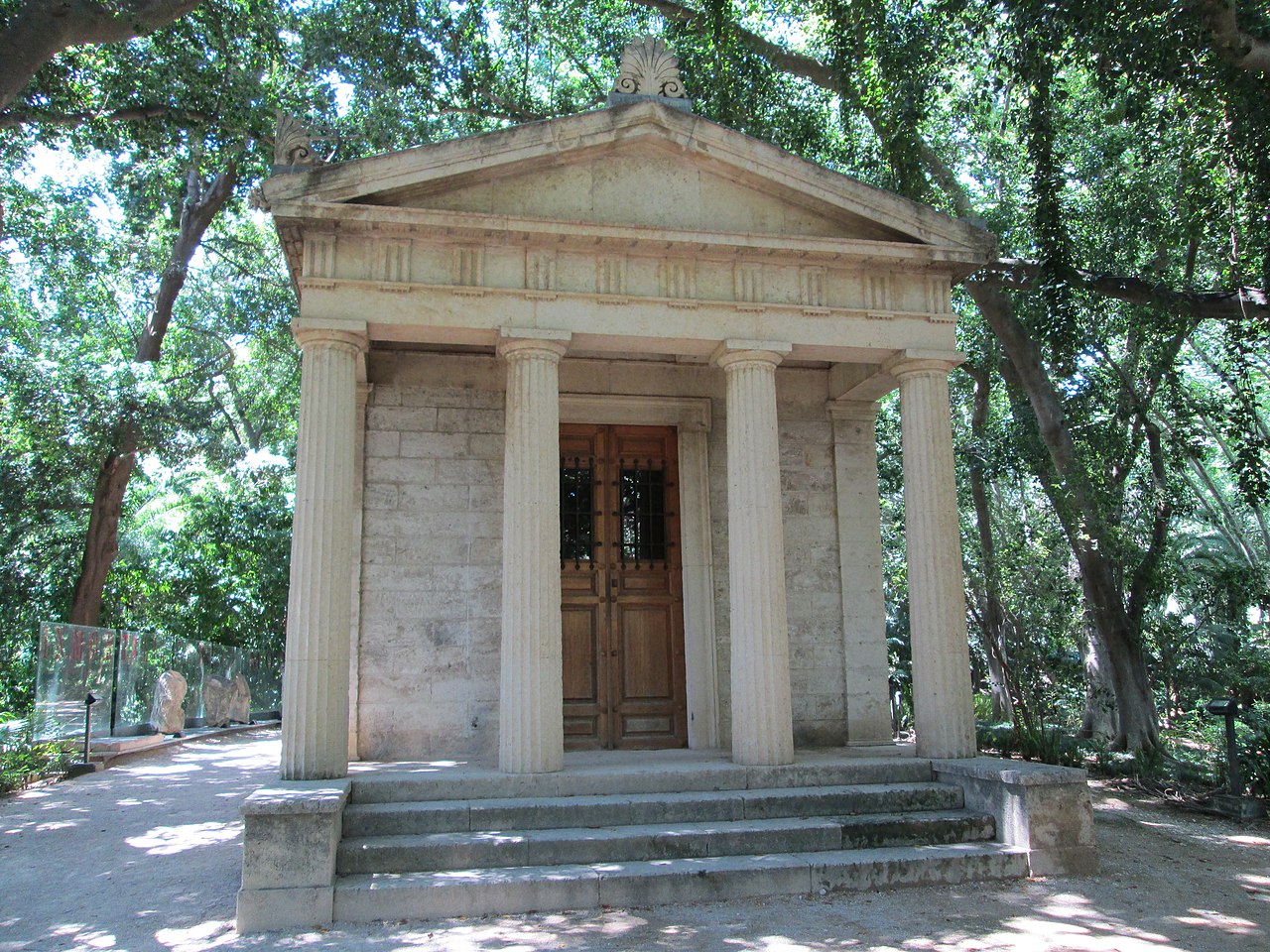
Bandstand of the Loringiano museum
We have already told you about this installation and how it included numerous archaeological pieces. We have also indicated that most of these are in different museums. However, the precious neoclassical temple of Doric order and with four columns on its façade, it is still in the garden and is one of its most beautiful details. Along with it, there are also some other Roman pieces.
The modern botanical garden
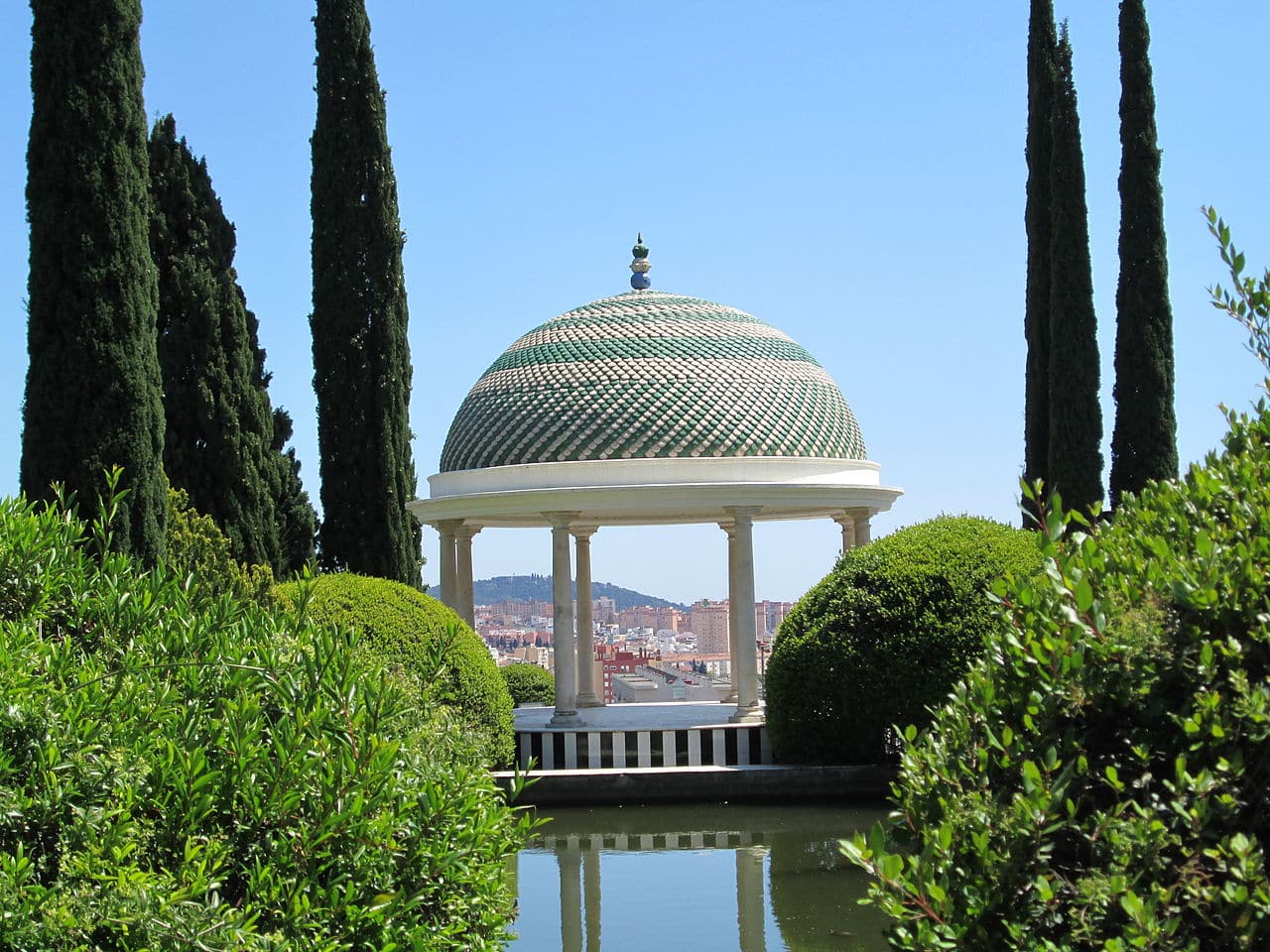
Historical viewpoint of La Concepción
This name is given to the part of the botanical garden of Malaga created later around the previous one. Due to this, it was done with ordering criteria by collections. In this way, visitors could better organize their visit.
Among the parts that make up this area is the section called Around the world in eighty trees, which, as its name suggests, contains eighty species from all five continents. For example, olive trees, strawberry trees, tulip trees, grevilleas or lime trees. We also advise you to see the Palm Avenue. Organized in the manner of a world map, it contains seventy-five varieties equally from all points of the planet. Among these, there are specimens of Caranday, Bismarck, Caryotas, Dypsis or Livistonas palm trees.
We can tell you the same about The cactus garden, which you will find just behind the viewpoint that shows the city of Malaga. But not only does it have cacti, but also other succulent plants. Thus, it offers you collections of aloes, agaves, yucas or opuntias. On the other hand, there is the call Rockery of Biodiversity, which includes the typical plants of the Mediterranean climate. It is structured in terraces, with a space dedicated to the vegetables of each zone where this climatology occurs as parts of Australia, California o Chile. It also houses the Phoenix Project, where native species in danger of extinction are located, such as Erica andevalensis.
Finally the call hot stove it is a greenhouse that recreates the conditions of tropical forests. It has a constant temperature of between twenty and twenty-eight degrees Celsius and a humidity of between seventy and eighty percent. Thanks to this, it manages to conserve species such as orchids, bromeliads and various types of carnivorous plants.
On the other hand, the modern area of the botanical garden of Malaga not only has enormous natural value. It also has some buildings of interest. Let's show them to you.
constructions of interest
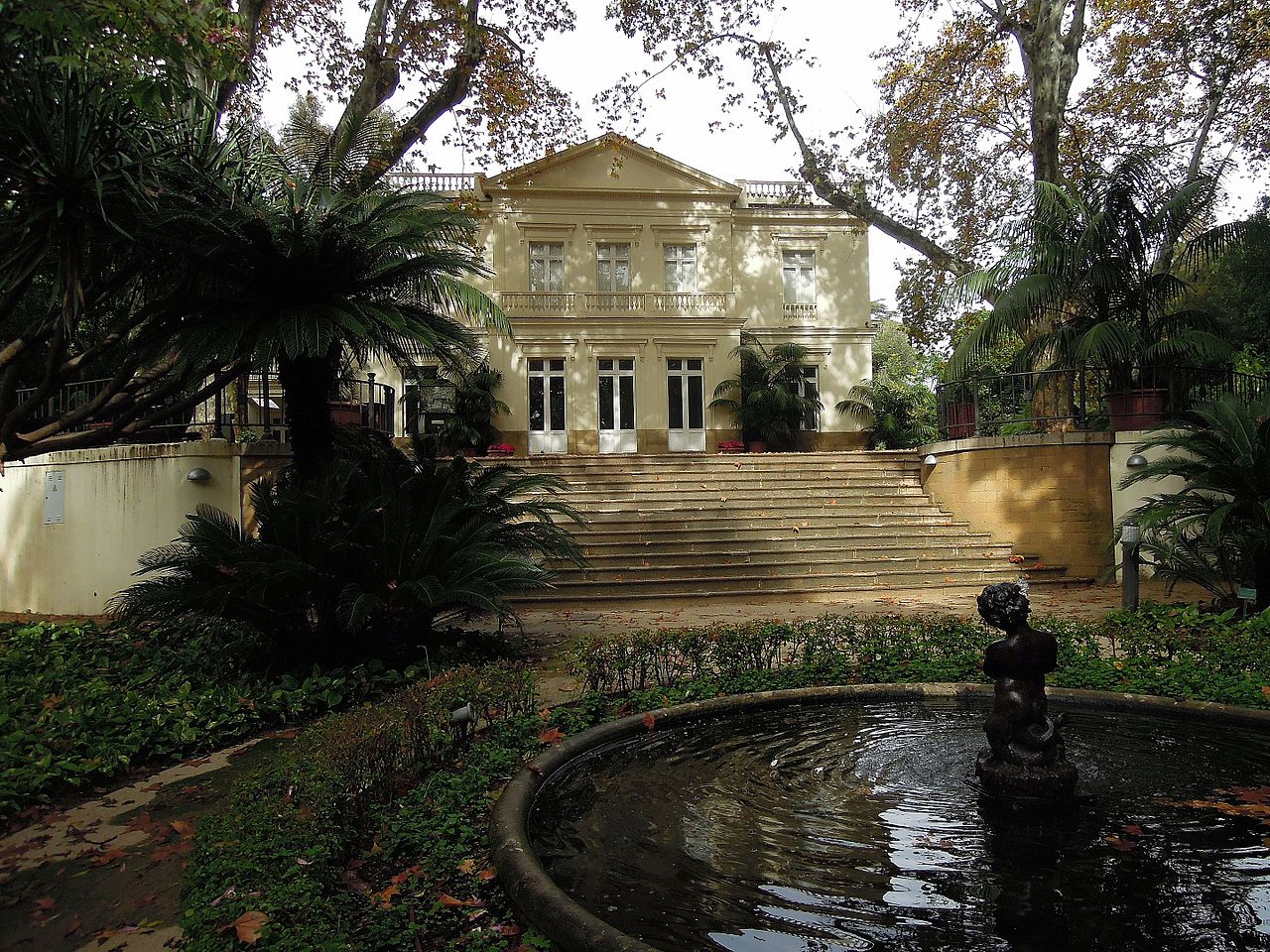
The Loring house-palace
First of all, you have the house-palace of the Lorings, conceived as a recreational villa for the family. It was built by the German architect August Orth following classical canons. The interior is organized around a central patio that overlooks two floors of galleries and in whose center there is a marble fountain. Family friends like the empress sissi from Austria or Antonio Canovas del Castillo.
For its part, the manager's house It is a Swiss-style construction built to house the workers of the farm. Also, in the lower part were the stables. Currently, it functions as an exhibition hall and a research laboratory for the garden. More humble are the houses of the cypresses and the gardener.The latter houses today the permanent exhibition entitled La Conception story told by Barbies, work of Alberto Martín. For its part, old school stands out for its colorful stained glass window and was built by Rafael Echevarrieta for the children of their employees.
Two old greenhouses and the historic viewpoint complete the monumental heritage offered by the botanical garden of Malaga. This last viewpoint is a regionalist-style jewel that he also ordered to be built by Rafael Echevarrieta in 1920. Preceded by a pond and surrounded by cypress trees, it offers wonderful views of both the city of Málaga as the Mount Gibralpharo and the Costa del Sol.
But you shouldn't leave the installation without taking your picture on the semicircular bench located in front of the Loringiano museum. It is almost a tradition among visitors to do so. Based on a design by the German architect Schinker, it has classic shapes and cannot be missing in any garden in the world. Finally, come to visit the eastern temple and, above all, the beautiful waterfall. The latter, surrounded by enormous leaves of Monstera deliciosa, forms part of the primitive garden and is crossed by small bridges and stone steps.
In conclusion, we have shown you everything you can see in the Malaga botanical garden o Historical botanical garden of La Concepción. Without a doubt, it is one of the most beautiful in the Costa del Sol. But, there are also others like the University Botanist, Farm San Jose or those of Retirement y The Consulate. Likewise, since you are in the Andalusian city, do not forget to visit its beautiful Cathedral of the Incarnation, Renaissance with Baroque elements; the Gibralfaro fortress, built by the Nasrid king Yusuf I in the fourteenth century, and his Roman Theatre, dating from I before Christ. Don't you think there are more than enough reasons to visit Malaga?